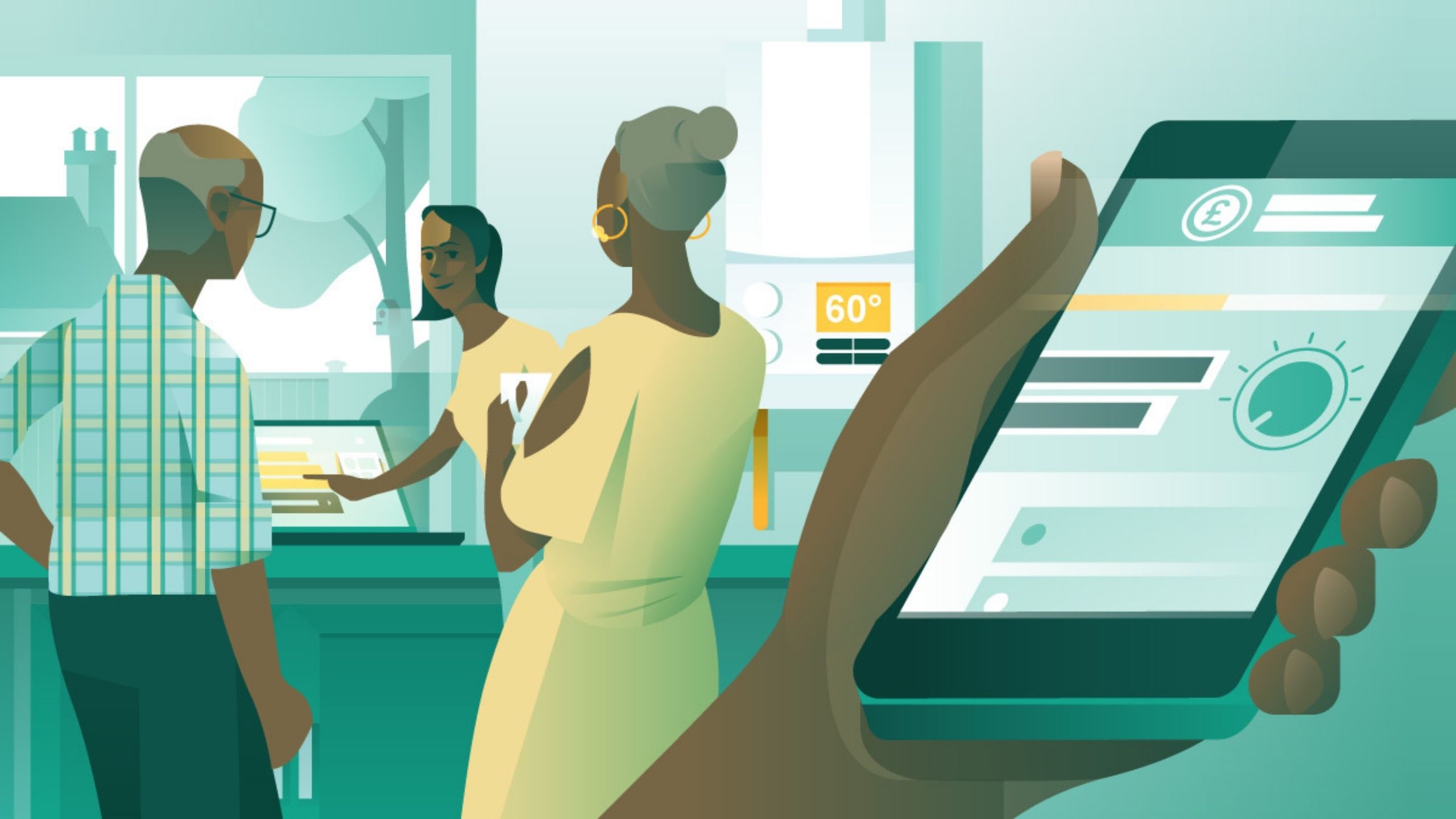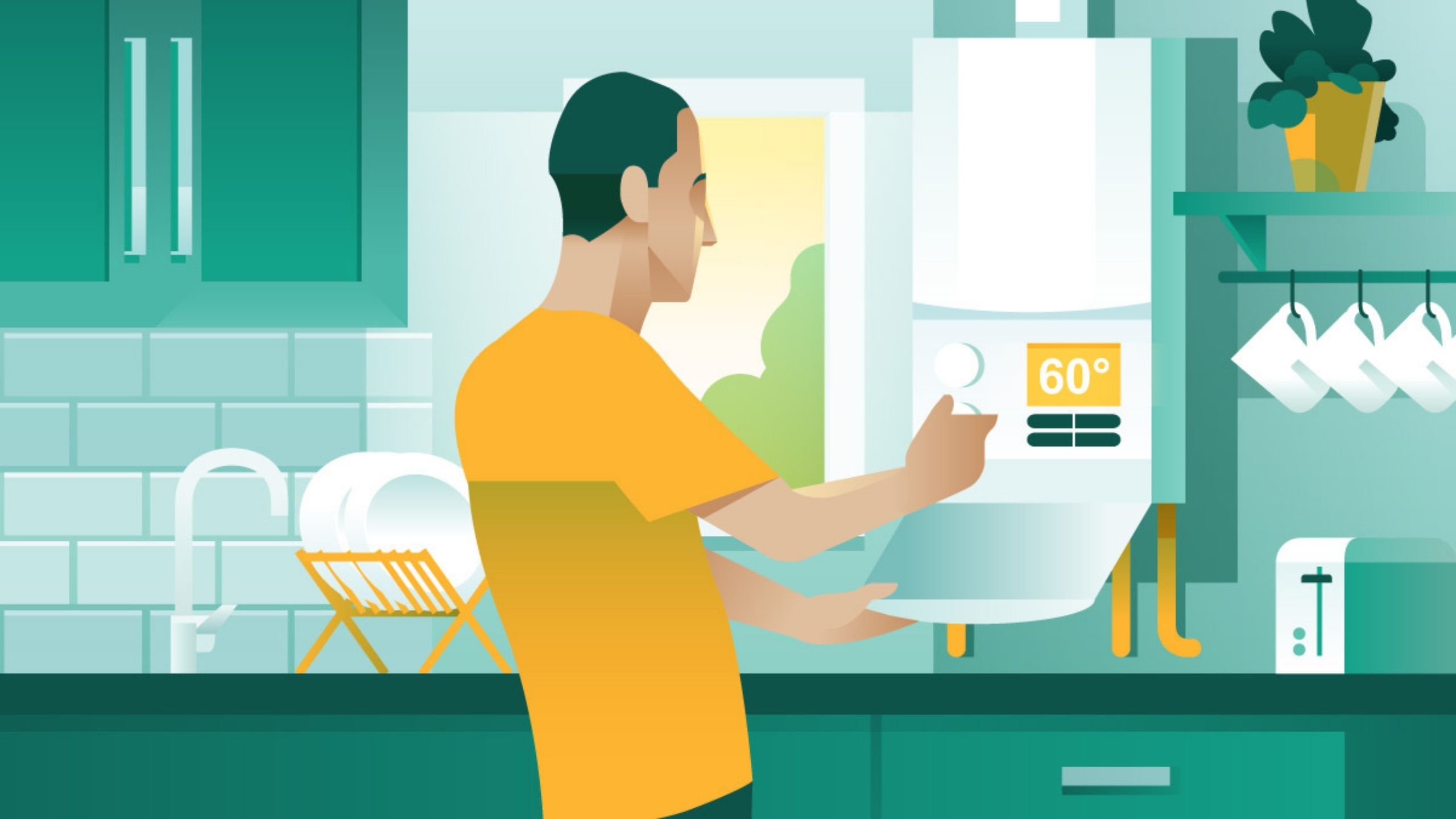Money Saving Boiler Challenge
A case study

Money Saving Boiler Challenge
A case study
At a glance
The Money Saving Boiler Challenge was an award-winning Nesta campaign launched in October 2022 to cut the nation's carbon emissions and reduce household energy costs. The campaign encouraged households with condensing combi boilers to turn down their boiler flow temperature; a simple action that can save money and reduce emissions. Through an interdisciplinary approach, drawing on the expertise of our design practice and a targeted communications strategy, the campaign reached millions of people and led to measurable savings and carbon reductions.
The challenge
In the UK, our homes are the third-largest producer of greenhouse gas emissions - directly responsible for creating around 70 million tonnes of CO2 annually. To reach the UK’s climate targets, we need to see homes cut emissions at a much faster rate.
Many condensing combi boilers in the UK aren’t operating to their maximum efficiency. They’re burning more gas, generating more emissions and costing households more than they need to.
These boilers should be set to a lower flow temperature. However, only 1 in 10 households reported having changed their boiler flow temperature in the last year in 2022 (ONS, 2022). Many householders were not aware that they could change their boiler settings, while others were worried that they would make a mistake.
Extensive research and testing revealed that the simple step of reducing boiler flow temperatures was one of the easiest and most effective ways for households to cut emissions - and that this would save money on energy bills, too.
Our research showed that for the average household, turning down from 80 to 60 degrees, the carbon saving is around 173kg per year.
About 15 million condensing combi boilers in the UK could be optimised for a gas saving of 6 - 8% if reduced to a lower flow temperature, saving an average of £96 per year per household (2022 prices).
What we did
We started the project by designing a prototype intervention, which was a web tool that households could use to help them turn down their boilers, which we developed by drawing on insights and expertise from industry experts and a small number of pilot households. The prototype helped us to understand that what was needed was clear, accessible and trustworthy guidance that those giving the information could point to. We also needed to have robust evidence on the potential cost savings to customers if they turned their boilers down.
We tested different versions of this web tool, culminating in a larger-scale experiment where it was emailed to 3,500 users of an energy advice app.
We undertook a wide-ranging research phase to give us a solid evidence base to recommend lowering flow temperatures. This included measuring the impact of lowering flow temperatures in the Energy House at Salford University; using modelling work by Cambridge Architectural Research to estimate the number of UK homes that could take this action; and working with Energy Systems Catapult to measure savings and impact on room temperatures on different types of homes when changing flow temperature.
In October 2022, against the backdrop of the cost-of-living crisis and rising energy bills across the nation, we launched the Money Saving Boiler Challenge to encourage UK households to use the tool to learn how to turn down their boiler flow temperature. We secured a wide range of partners from energy companies to consumer advice organisations to back this campaign and help us get the message out to households.
Our guidance took the form of a web tool that gives tailored instructions on how to change boiler settings and an accompanying toolkit - allowing local authorities, energy providers and charities to provide advice with confidence.
The outcome
Our campaign reached 9.7 million adults and led to approximately 3.1 million households turning down their boiler flow temperatures over the course of the campaign. This saved an estimated 500,000 tonnes in CO2 and nearly £300 million in savings for households and £157 million for HM Treasury.
Our campaign won multiple awards for its impact, including the PRCA UK Awards 2023 for Consumer (In-house) and Digital and Social Media (In-house), with campaign partners OVO. It also received Campaign of the Year at the Energy Awards 2023.
The carbon savings achieved account for around 2% of our sustainable future mission goal of cutting household emissions by 30% by 2030.
To meet climate targets and create a healthier planet we need to significantly reduce carbon emissions. While this tool and the campaign certainly helped cut emissions by a small, but important amount, it is a helpful reminder that even the big cut-through moments won’t be enough on their own: we need to keep pushing a number of different approaches to hit the target and reach net zero.
What we learnt



Convening the consumer-facing heating and advice system and understanding the needs defined our approach
We used our expertise in design to understand the challenges faced by those in a position to provide this advice, develop and test a web tool that offered tailored, step-by-step instructions, and provide actionable tools and advice to the wide range of stakeholders who received this guidance. This allowed stakeholders to provide valuable resources to users and removed a key behavioural barrier for households - the fear of making a mistake, helping to convert interest into action.
An evidence-based approach is key: the campaign's success was rooted in our rigorous, practical, and evidence-led approach
We knew that organisations giving advice to householders needed to be absolutely confident in the tool, the potential energy and cost and energy savings. They also needed to be able to answer questions about the impact of boiler turn down on how warm the house would be. Our advice on the actual flow temperature to recommend came from our work with Energy Systems Catapult and Salford Energy House. This was critical in securing stakeholder buy-in and confidence in the recommendations.
Use real-world trials to validate assumptions
Our partnership with Loop, a smart meter app company, allowed us to conduct a controlled pilot trial with two distinct groups: one that received a link to our online tool and a control group that did not. The statistically significant difference in self-reported boiler adjustments between the groups (34% vs 19%) provided tangible evidence that our online tool was effective in changing behaviour. This rigorous evaluation methodology was critical for validating the campaign's approach.



Convening the consumer-facing heating and advice system and understanding the needs defined our approach
We used our expertise in design to understand the challenges faced by those in a position to provide this advice, develop and test a web tool that offered tailored, step-by-step instructions, and provide actionable tools and advice to the wide range of stakeholders who received this guidance. This allowed stakeholders to provide valuable resources to users and removed a key behavioural barrier for households - the fear of making a mistake, helping to convert interest into action.
An evidence-based approach is key: the campaign's success was rooted in our rigorous, practical, and evidence-led approach
We knew that organisations giving advice to householders needed to be absolutely confident in the tool, the potential energy and cost and energy savings. They also needed to be able to answer questions about the impact of boiler turn down on how warm the house would be. Our advice on the actual flow temperature to recommend came from our work with Energy Systems Catapult and Salford Energy House. This was critical in securing stakeholder buy-in and confidence in the recommendations.
Use real-world trials to validate assumptions
Our partnership with Loop, a smart meter app company, allowed us to conduct a controlled pilot trial with two distinct groups: one that received a link to our online tool and a control group that did not. The statistically significant difference in self-reported boiler adjustments between the groups (34% vs 19%) provided tangible evidence that our online tool was effective in changing behaviour. This rigorous evaluation methodology was critical for validating the campaign's approach.


